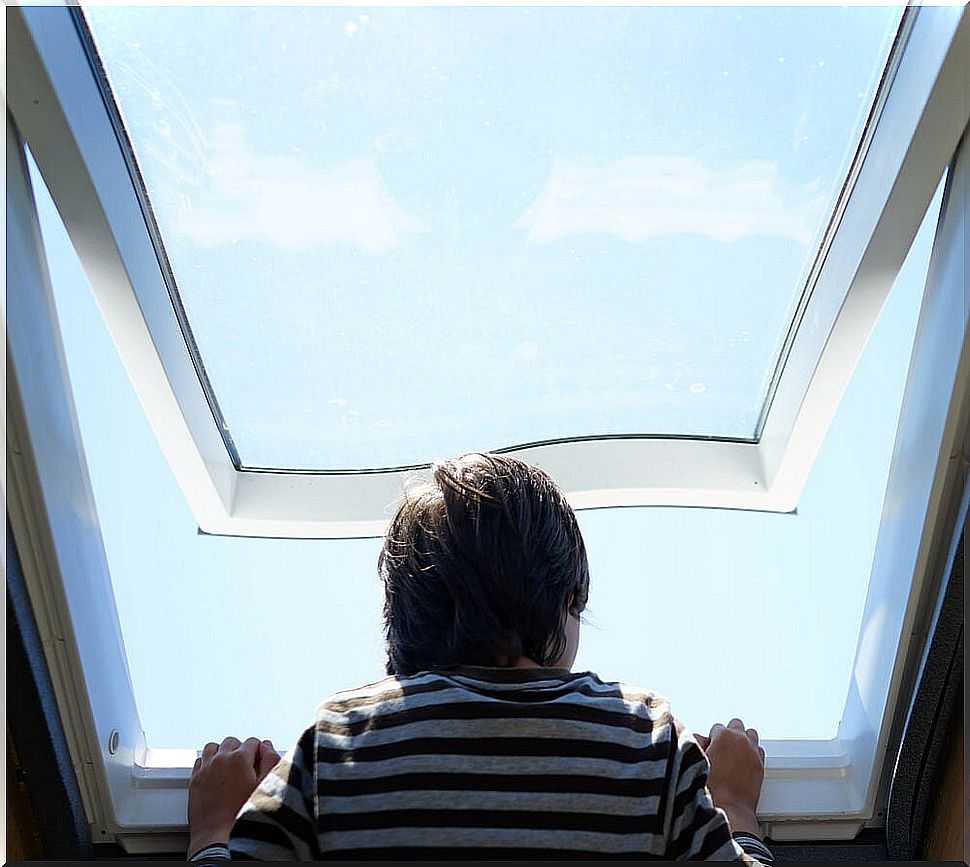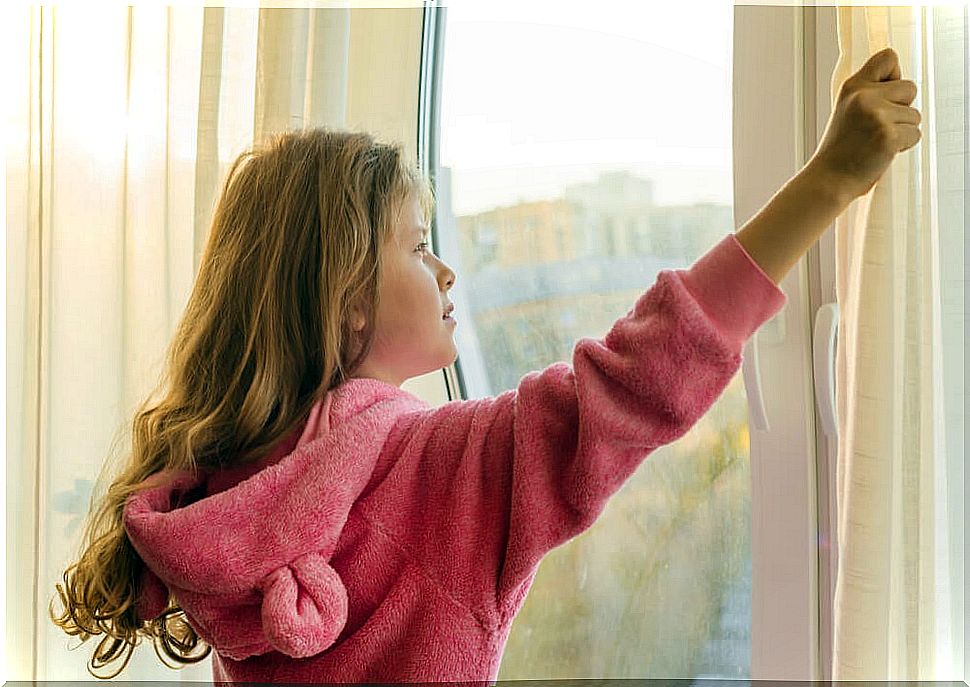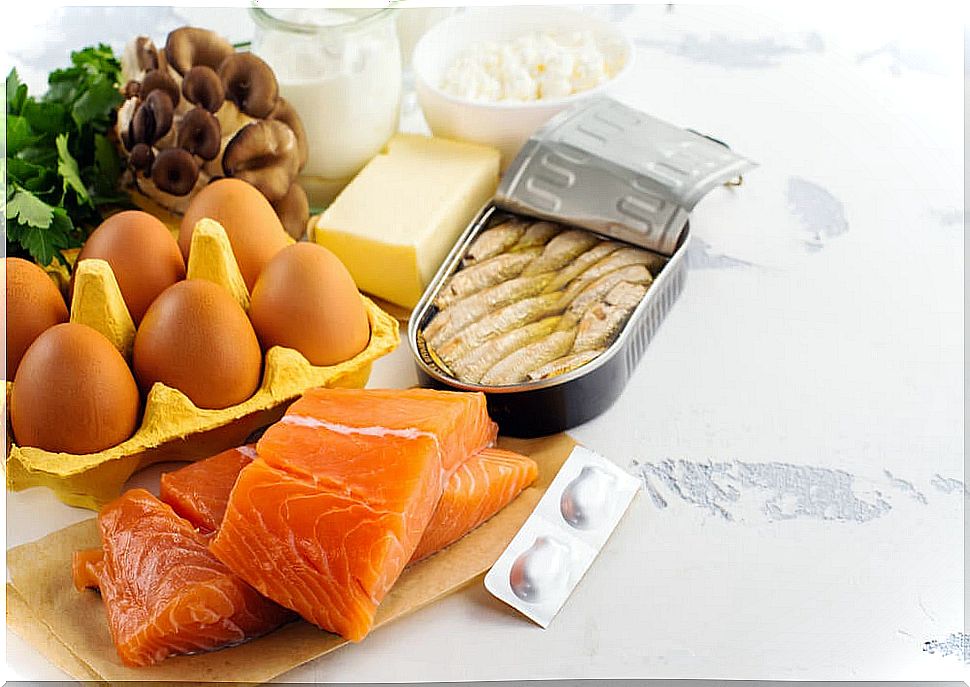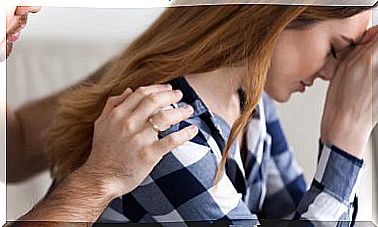Vitamin D During Confinement: How To Reach The Recommended Dose?

The amount of vitamin D in the body is usually low among the population, regardless of age. Given the situation we are experiencing with the coronavirus, the concern about covering those doses of vitamin D during confinement has increased.
Although we are not aware, it performs various functions in the body related to bones and the immune system, since it acts like a hormone. Stay tuned as we will reveal it to you below.
Vitamin D: what functions does it perform?
One of the best known functions of this vitamin is to facilitate the absorption of calcium by the bones. As a consequence, it prevents the risk of fractures, osteopenia and osteoporosis, which are nothing more than the loss of bone mass.
However, it is key in regulating the functioning of the immune system. On the one hand, it prevents the body from reacting to its own cells and fights against infections and foreign substances. On the other hand, it favors food tolerance, thus reducing the risk of allergies and intolerances. The main reason is that it maintains the integrity of the intestinal barrier.
It also has an anti-inflammatory effect, especially in people with obesity, inflammatory bowel diseases, celiac disease, and joints, such as arthritis or lupus.
Even adequate levels are related to fertility and pregnancy. It prevents the onset of pre-eclampsia, respiratory infections, as well as premature labor and low birth weight.
Vitamin D metabolism
There are two forms: D2 (ergocalciferol) and D3 (cholecalciferol). They differ in that the first is found in vegetables and the other is of animal origin. They are also distinguished by the degree of absorption, which is higher in the case of cholecalciferol, since it has a higher affinity for receptors.

Both are transformed into active forms in the liver and kidney. Later, it is stored in fatty tissues, since it is fat soluble.
Vitamin D during confinement: how to reach the recommended dose?
Ideally, maintain serum concentrations of 25OHD between 30 and 50 ng / ml (75-125 nmol / l). Before explaining the different strategies to cover the levels established by official bodies, you should know that the levels depend on:
- The genetic.
- Age (decreases as the years go by).
- Race and skin pigmentation.
- The time and surface exposed to the sun. It is related to the amount of clothing and the stay in indoor places.
- The use of sunscreen.
- The season of the year.
- The latitude of the place where we live.
- The mother’s levels during pregnancy.
- Weight (obesity hinders its function since the fat tissue sequesters it).
- Intestinal, autoimmune diseases, kidney or liver failure.
- Physical activity outdoors.
- The use of certain drugs (cholestyramine, anticonvulsants, antiretrovirals for HIV, glucocorticoids and antifungals).
Even the pollution of the environment makes its absorption difficult.
Diet, the basic strategy to get vitamin D during confinement
Although she is only assimilated by 10% with food, she can now become an ally. Mainly, it is found in:
- Blue fish such as eel, tuna, salmon, sardines, etc.
- Dairy.
- The egg yolk.
- The viscera.
- Cod liver oil.
- Shiitake mushrooms.
- Fortified plant-based drinks, such as soy.
- Enriched cereal flakes (without added sugar) such as oats.
- Avocado.
Solar exposition
Sun exposure contributes 90% of the recommended daily amount. It comes from the conversion of 7-dehydrocholesterol present in the skin when in contact with sunlight. Therefore, the recommendation is to sunbathe for at least 15 minutes daily. However, now it can be difficult, as we remain locked at home longer.
The solution is to open the window or go out to the balcony in the sunniest hours, since the glass acts as a screen. You can even take advantage, when shopping, to go through the sunniest areas of the street, if possible.

Supplementation
Finally, in case of blood levels below 30ng / ml, it is necessary to supplement. To know this, you need an analysis and, unless you have done it just before confinement, it is risky to know the exact dose you can take. You can always consult your doctor or dietitian-nutritionist.
Keep in mind that it comes from the lanolin present in sheep’s wool, since it is D3 and is better absorbed, as mentioned above. In addition, it is presented in gelatinous capsules that contain olive oil, since, being a fat, it favors its absorption.
For this reason, if not, take it for breakfast with a food rich in fat, such as avocado, oil, ham, egg, some olives, cheese or a whole natural yogurt (not skimmed).
The minimum dose recommended by the Spanish Society of Endocrinology and Nutrition is:
- 400 IU daily (10µg) up to 12 months.
- 600 IU daily (15µg) up to age 70.
- 800 IU daily (20µg) in people over 70 years of age.
The following doses could also be consumed without posing a health risk.
- Children 1 to 10 years: 2000IU / day.
- Young adolescents 11-17 years old 4000IU / day.
- Adults> 18 years 10000IU.
Vitamin D and confinement
In summary, remember that most people are in this situation and you should not worry too much, since it is punctual. Even so, try to follow the recommendations mentioned to maintain or slightly increase the values.










